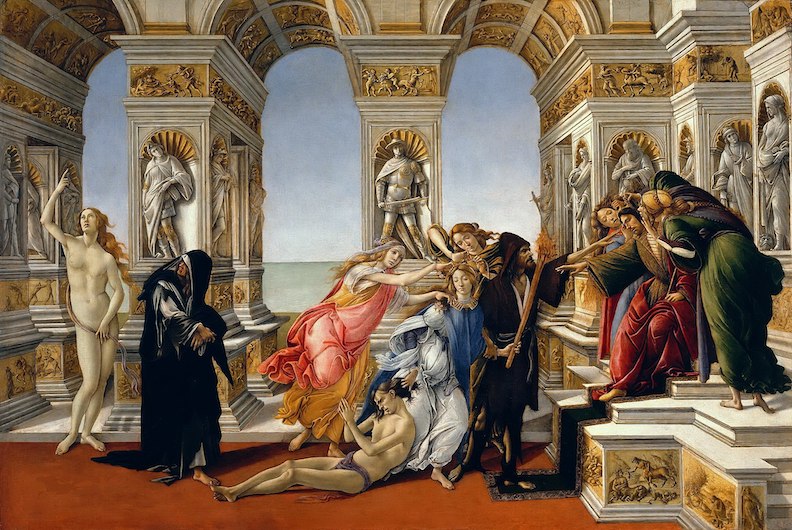A couple of years ago, the owner of a large Catholic website asked to do a video interview with me. I had never heard of the individual, but agreed to do it, though it was the day before Thanksgiving. Looking a bit haggard in my black sweatshirt and Redskins cap after a long drive with four young children, I took my laptop to a cramped upstairs office-turned-baby-bedroom.
My interviewer, in contrast, was wearing a suit, with an impressive backdrop like you see on cable news. “Are you going to take off that baseball hat?” an off-camera videographer asked with a sigh. The audiographer asked me about my mic. Apart from the one in my laptop, I didn’t have one. Afterward, a bit stunned by the fact that this Catholic interviewer had a video and audio crew, I looked him up. Sure enough, he was a dyed-in-the-wool Catholic celebrity; the site had millions of hits per month.
For someone who regularly writes for Catholic publications, I probably ought to feel more embarrassed that I was entirely ignorant of a major Catholic journalist, and his website. Then again, like the broader American media environment, Catholic journalism is a massive, diverse, and confounding jungle of competing outlets, each with its own unique mission and vision. Who can possibly keep track of them all?
Veteran Catholic journalist John L. Allen Jr.’s Catholics & Contempt: How Catholic Media Fuel Today’s Fights, and What to Do About It tries. Allen cites fourteen Catholic sites that either report or comment on the news: Catholic News Agency, Catholic News Service, EWTN News, National Catholic Register, National Catholic Reporter, ZENIT, Crux, America, Catholic Herald, Fr. Z’s Blog, Crisis Magazine, Catholic World Report, OnePeterFive, and Catholic World News. I myself hadn’t even heard of two of these and there are, of course, many, many more.
Some of the above are centrist, others varying shades of conservative or liberal. Some are reliably straight shooters; a few tend toward the alarmist and provocative. Though Allen takes issue with a few, they are not his primary targets. Rather, he’s concerned with those outlets that he views as causing the most damage, both to Catholic readers and the broader world, those that participate in and fuel the “culture of contempt,” often with misleading if not fallacious reporting: “Making people mad is a good business model. It drives traffic, sells ads, and puts money in the bank.”
For Allen, this is personal: a few years ago the Catholic pundit Michael Voris – of Church Militant – accused Allen of dumping his wife and shacking up with another woman. It wasn’t true. To add insult to injury, Voris performed further rhetorical gymnastics, claiming that somehow Allen’s alleged infidelities “call[ed] into serious question” the legitimacy of Bishop Robert Barron.

Allen’s experience can’t help but color his analysis, but he’s far from alone. When Benedict XVI was elected, some Catholic media (unfairly) portrayed him as a hardline, villainous revanchist with a Nazi past (as a young German, he was drafted against his will, and deserted when he was able). Pope Francis has meanwhile been labeled by some on the right as illegitimate. In 2015, Archbishop Luigi Negri of Ferrara-Comacchio was accused – with no real evidence – of wanting Pope Francis to die.
Allen seems particularly concerned with LifeSite News, which he accuses of misleading and sensationalist attack journalism. For example, LifeSite aggressively criticized Canadian priest and politician Raymond Gravel, charging that he was “anti-life” and a “renegade.” Yet Gravel voted pro-choice while he served in the Canadian parliament.
LifeSite has also portrayed the rise of the “fact-checking” industry as a means, in Allen’s words, by which “social elites seek to control the public perception of reality, implying that terms such as ‘debunked’ are actually ‘propaganda tools.’”
Yet LifeSite is hardly to be blamed for pointing this out. The New Criterion and other respected outlets have derided the obvious fact-checking industry’s biased focus on conservative politicians and figures, while largely giving Democratic politicians such as Barack Obama and Joe Biden passes.
Allen thinks it evidence of LifeSite’s poor credibility that it has twice had its Twitter account suspended – but less controversial Catholics have also had their Twitter accounts suspended for little more than quoting Scripture or official Church teaching. And in light of what we now know about the coronavirus – its origins, its manipulation by elites to accomplish their own political goals, its abuse in foolishly closing schools and churches – Allen’s attack on LifeSite’s reporting on the pandemic is borderline laughable.
He’s better when he’s suggesting what we should do to reverse this “culture of contempt.” First, we should be more respectful, less contemptuous, by exhibiting careful custody of our tongues (and keyboards). Indeed, we should be gracious and positive, as much as possible in the search for truth.
And, when it comes to those outlets who profit off endless controversy, we should simply avert our eyes, refusing to be dragged into negative, spiteful news that is harmful both to ourselves and to the body of Christ.
After I converted to Catholicism in 2010, I often met Catholics who were devoted to the latest, hottest news in the Catholic world, especially obscure, controversial stories out of the Vatican, as if what happened behind closed doors thousands of miles away was constantly affecting (and threatening) their own beliefs and practices as Catholics.
It seemed to a former Protestant like myself, who had been knee-deep in the endless, fissiparous debates within American Calvinism, to be largely unproductive. Wasn’t the whole point of Catholicism – at least as far as the fundamentals go – that it’s universal? That it doesn’t change? One of its many attractions for me was its timelessness, its ability to retain a healthy, detached confidence even amid crises.
Regardless of what silliness is going on in Catholic media, many of us would do well to take Allen’s advice about outlets that are just as bad as their secular equivalents: Just don’t look.
__________















